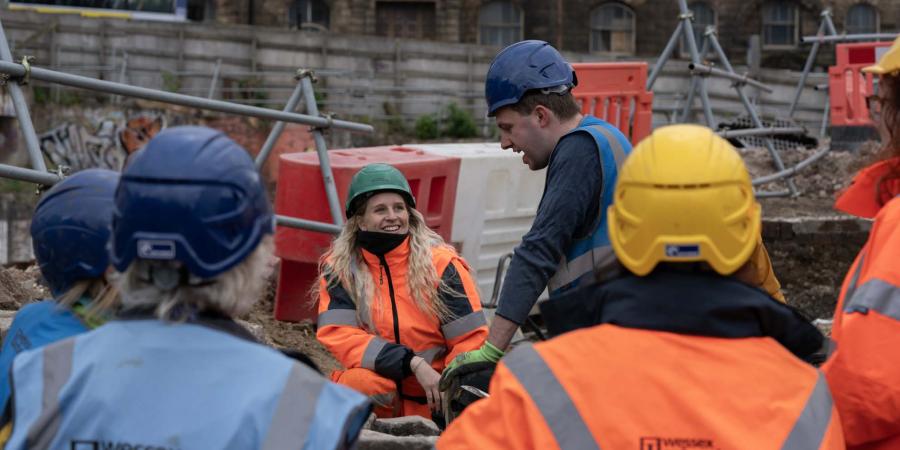“I felt this morning...when I was getting up that I was going to step back into history”
Whirring diggers, crunching of concrete underfoot and machine noises all around. This is about as urban as it gets on a community dig, but the local community have been able to step back through time and uncover Sheffield’s rich heritage through excavation experiences and site tours at Sheffield Castle.
Throughout our 10-week programme we have invited the public to take part in Excavation Experiences and Site Tours. Places have been snapped up quickly. Here, some of our participants talk about their experiences on site.
Exciting, fascinating and absorbing

Participants record 18th and 19th century structures built over the motte with help from archaeologist Viktoría Halldórsdóttir and Engagement and Inclusion Officer Natasha Bramall ©Wessex Archaeology
Excavation experiences have a one, two or three day pass, and with five spaces per day, uncovering the archaeology at Sheffield Castle has been a real community effort. As the community dig has progressed, participants have been trowelling back through the layers of Sheffield’s history, starting with its Steel City roots.

Participants are walked through features relating to the 19th Century Castle Hill Steel Works ©Wessex Archaeology
Guided by Engagement and Inclusion Officer Natasha Bramall and archaeologist Viktoría Halldórsdóttir, people on the community dig began exposing structures related to the 19th Century steelworks (mentioned in our last blog) and soon got stuck in figuring out brick bonds and phasing. Roger, one of our participants said:
“Helping to determine when a stone wall was built was very satisfying. It was constructed on a layer of clay sealing the loose stone of the motte. There was a fragment of brick in the mortar, so it was a late addition. All in all it was a great experience, and over in no time."

Archaeologist Viktoría Halldórsdóttir guides her team through the recording process and listens to their interpretation of features ©Wessex Archaeology
Even though the 19th structures were a hit, many of our participants were eager to hunt for any clues (or features!) relating to the castle. With the location of the steel works built over the Norman motte, Natasha, Viktoría and the team were hopeful that castle features would still be preserved. The hard work of the participants paid off and as the weeks passed, more rough pieces of sandstone began to emerge. But it wasn't until week 7 of the dig that the team could say for certain that they had found the castle. Beneath the complex layers of development, the castle's unmistakable sandstone structure was revealed. Nestled between later brick walls and cut off by a modern drain, the community members used trowels to carefully expose the remains of the castle wall.

Left- Before: excitement builds and the team of participants uncover part of Sheffield Castle. Right- After: First glimpses of the castle in the community dig excavation area ©Wessex Archaeology
With three more weeks to go until the end of the dig, we can't wait to uncover more of Sheffield's story with the local community. We think excavation participant Alice sums up our excitement best by saying:
